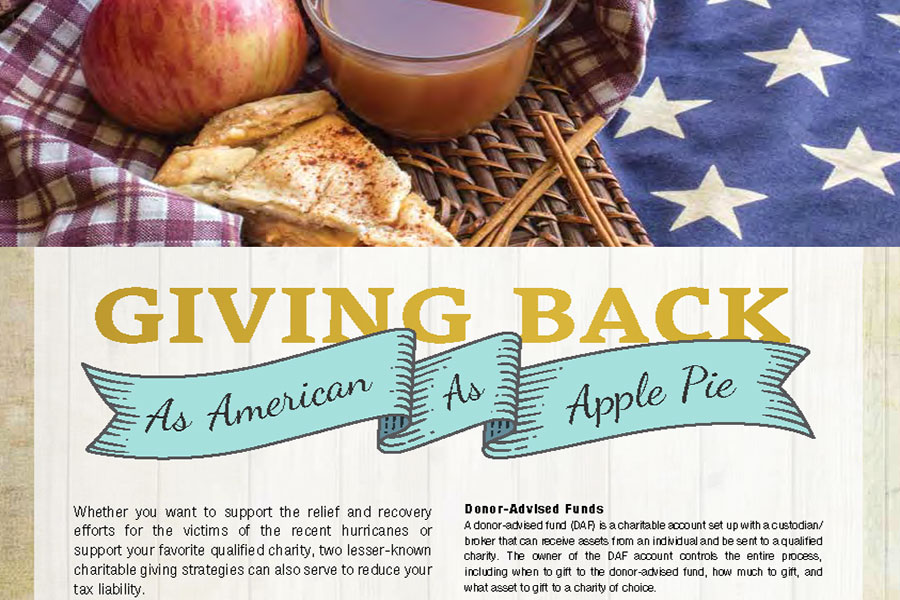Giving Back

Charitable Giving Tax-Saving Strategies
Whether you want to support the relief and recovery efforts for the victims of the recent hurricanes or support your favorite qualified charity, two lesser-known charitable giving strategies can also serve to reduce your tax liability.
Most people are well aware of giving cash or a check. But there are two not-so-well known high-powered, tax-saving charitable giving strategies that provide extra bang for the buck. Before the end of the year, consider making a gift to your favorite qualified charity using one of these two strategies.
Charitable IRA Distributions
Qualified charitable distributions (QCDs) are distributions made from an individual retirement account (IRA) directly to a qualified charity, and up to $100,000 can be gifted and excluded from the taxpayer’s gross income. Only individuals aged 70½ and older are allowed to take part in this charitable giving strategy, and these direct donations count towards the taxpayer’s required minimum distribution (RMD).
Although the gift cannot be included as a charitable deduction on the taxpayer’s income tax return (Schedule A – Itemized Deductions), the income stays off the income tax return altogether, potentially saving the taxpayer federal taxes (and sometimes state income tax too, depending on the state of residence). This strategy was made permanent via legislation as part of the Protecting Americans from Tax Hikes (PATH) Act of 2015.
Donor-Advised Funds
A donor-advised fund (DAF) is a charitable account set up with a custodian/ broker that can receive assets from an individual and be sent to a qualified charity. The owner of the DAF account controls the entire process, including when to gift to the donor-advised fund, how much to gift, and what asset to gift to a charity of choice.
A tax deduction (up to 30% of AGI if securities are used) is received when making a gift to the DAF. The tax deduction is based on the market value of the appreciated security on the date that the gift is made. It is important to keep in mind that if securities are gifted to the DAF, they must have been owned for at least one year before being gifted.
This strategy works well when an individual has appreciated securities, like stocks, that he or she can gift. The asset(s) can sit in the DAF and await direction on when to be sent to the charity of choice. This strategy is excellent when an individual has higher-than-usual income, such as from the sale of a business or earning a large bonus. The individual can front load several years’ worth of charitable gifting in one year, thereby taking advantage of a larger tax deduction that year. Then, the individual can send smaller amounts to qualified charities from the DAF over a period of several years.
Ask Your Advisor About Options and Rules
If you are looking for ways to make a difference and minimize your tax obligation before the end of the year, ask your tax professional or financial advisor about these two strategies. Although they are not complex, make sure you understand all of the rules before taking action.
